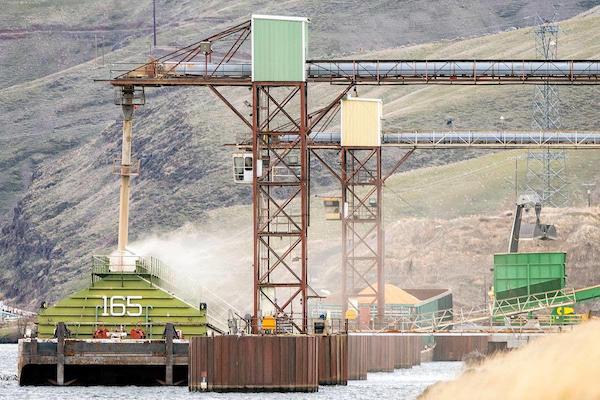forum
library
tutorial
contact

Final Columbia River EIS Doesn’t
Eliminate Snake River Dams
by Staff
Waterways Journal, August 9, 2020
|
the film forum library tutorial contact |

|
Final Columbia River EIS Doesn’t
by Staff
|
The Columbia and Snake rivers provide a significant transportation network
for freight, and a cruise industry
 The Columbia River System Operations final environmental impact statement (EIS) was released July 31. It declined to recommend the closure and decommissioning of the four lower Snake River dams, as desired by interests (including Oregon Gov. Kate Brown) seeking to protect migrations of salmon and steelhead.The Corps had been ordered by U.S. District Judge Michael Simon in Portland, Ore., to include consideration of the option of closing the four dams as part of the EIS, after he concluded that not enough was being done to protect endangered fish in the Columbia Basin.
The Columbia River System Operations final environmental impact statement (EIS) was released July 31. It declined to recommend the closure and decommissioning of the four lower Snake River dams, as desired by interests (including Oregon Gov. Kate Brown) seeking to protect migrations of salmon and steelhead.The Corps had been ordered by U.S. District Judge Michael Simon in Portland, Ore., to include consideration of the option of closing the four dams as part of the EIS, after he concluded that not enough was being done to protect endangered fish in the Columbia Basin.
The EIS involved more than three years of regional collaboration between the Corps, Bureau of Reclamation, Bonneville Power Administration, other federal agencies, numerous tribes and the states of Washington, Oregon, Idaho and Montana. The EIS covers 14 Corps of Engineers and Bureau of Reclamation dams in the region and addresses the operation of those projects for hydropower, navigation, irrigation, flood risk management, recreation and municipal and industrial water supply while also providing benefits for the ongoing recovery of endangered species like salmon.
The EIS was greeted with praise by the Pacific Northwest Waterways Association, which advocates for navigation interests on the Columbia-Snake River System. "We are pleased to see the agencies support a preferred alternative that balances clean hydropower, efficient navigation and critical water supplies with ongoing salmon recovery efforts," PNWA Executive Director Kristin Meira said. "The Columbia and Snake rivers mean many things to many people in our region, and that includes the role they play as a significant transportation network for freight, the cruise industry and much more."
The agencies addressed several public comments about their decision not to breach the four lower Snake River dams, maintaining that the dams are critical infrastructure that Northwest communities depend on for low-carbon hydropower and efficient river navigation. The EIS found that breaching the dams would require massive investments to replace the barging system with rail and trucking infrastructure and would severely impact the cruising industry that brings an estimated 25,000 passengers up and down the river system each year.
The EIS concluded that removal of the Snake River dams would cut off trade access for the region's farmers and severely impact their ability to efficiently and safely move their products. In 2018 alone, more than 38,966 rail cars or 149,870 trucks would have been needed to move the cargo that was barged on the Snake River.
The EIS notes that the Snake River dams play an important role in maintaining reliability in the production of power used to supply electricity in the Pacific Northwest. Removing the Snake River dams would more than double the region's risk of power shortages and would lead to an additional 1.3 million tons of CO2 emissions annually, even with an increase in the use of other renewables.
The preferred alternative does include additional measures to continue the federal commitment to endangered fish species including salmon, steelhead, lamprey and other resident fish. These actions include management of invasive species, improvements to fish and wildlife habitat, fish hatchery production and management of avian and pinniped predators of salmonid species. It also includes new structural and operational measures to improve survival of fish as they pass the dams.
To review the final EIS, visit the Columbia River System Operations web page at www.nwd.usace.army.mil/CRSO.
learn more on topics covered in the film
see the video
read the script
learn the songs
discussion forum
